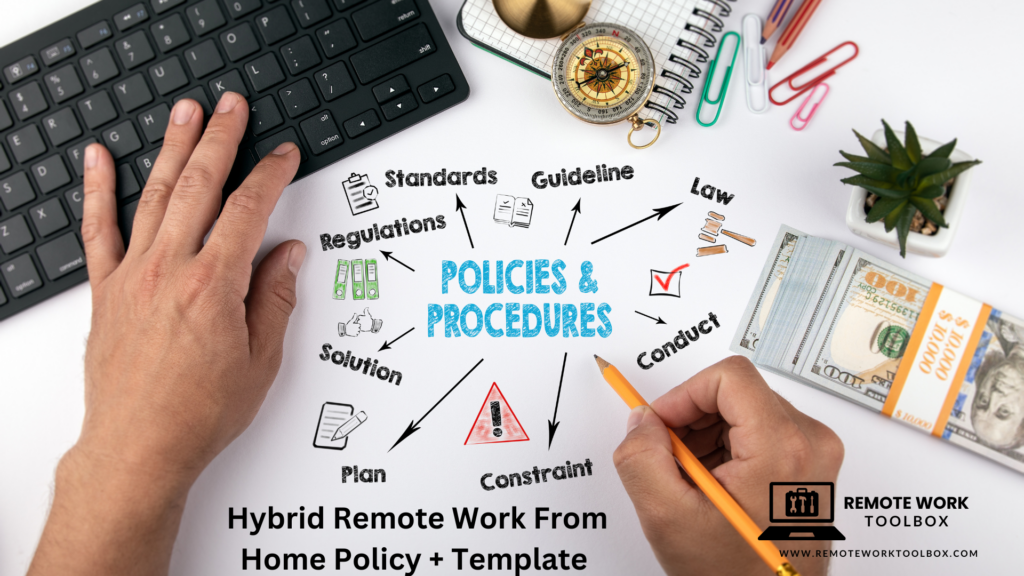Remote work has become increasingly popular, offering employees the flexibility to balance their work and personal lives more effectively. However, requesting to work from home requires a well-crafted email that clearly outlines your reasons and the benefits for both you and your employer. In this article, we’ll guide you through the process of writing a compelling work-from-home request email and provide you with a sample template. We’ll also cover key considerations such as evaluating your role for remote suitability, understanding company policies, and highlighting the benefits of remote work.
Assessing if Your Position is Appropriate for Remote Work
Before you request to work from home, it’s essential to determine if your job is suitable for remote work. Here are some factors to consider:
- Job Responsibilities: Evaluate the nature of your job responsibilities. Are your tasks mostly computer-based, or do they require physical presence in the office environment?
- Remote Capabilities: Determine if your duties can be performed remotely without compromising quality or productivity. Consider if your current work involves tasks that can be done from a home office setup.
- Communication Requirements: Consider how often you need to communicate with team members and whether this can be effectively managed through video conferencing, phone calls, and emails.
- Tools and Resources: Ensure that you have access to the necessary tools and resources to perform your job from home, such as a reliable computer, internet connection, and any specific software or equipment.
- Company Policies: Review your company’s remote work policy and any past precedents for remote work requests to understand the likelihood of approval.
Understanding Remote Work Policies
It’s important to understand your company’s remote work policy before making a request. Some key points to consider include:
- Legal Requirements: Be aware of any statutory flexible working request rights in your region.
- Company’s Remote Work Policy: Familiarize yourself with your company’s guidelines for remote work, including eligibility criteria and application procedures.
Benefits of Remote Work
Highlighting the benefits of remote work in your request can strengthen your case. Some benefits include:
- Better Work-Life Balance: Remote work allows for a more flexible schedule, helping you balance personal and professional responsibilities.
- Fewer Distractions: Working from home can reduce office-related distractions, leading to increased productivity.
- Improved Productivity: Many employees find they can focus better and complete tasks more efficiently in a home environment.
- Personal Reasons: Remote work can accommodate personal circumstances, such as caring for a family member or managing health issues.
- Health and Safety: Remote work can be crucial during times of inclement weather or health crises, ensuring that work continues without risking employee safety.
Key Components of a Work-From-Home Request Email
When writing your work-from-home request email, make sure to include the following key components:
- Subject Line: Craft an effective subject line that clearly states the purpose of your email. Example: “Request to Work from Home – [Your Name]”.
- Addressing the Right Person: Address your email to the appropriate person, such as your HR manager or direct supervisor.
- Specific Reasons for the Request: Clearly explain your reasons for requesting to work from home, whether they are personal, health-related, or related to productivity.
- Current Tasks and Remote Management: Highlight your current tasks and explain how they can be effectively managed remotely.
- Trial Period or Temporary Arrangement: Propose a trial period or temporary remote work arrangement to demonstrate your commitment to maintaining productivity.
- Effective Communication and Availability: Assure your employer that you will be available for communication through video calls, phone calls, and emails.
- Necessary Resources and Tools: List any resources and tools you need to work from home efficiently.
Sample Work-From-Home Request Email
Subject Line: Request to Work from Home – [Your Name]
Dear [Recipient’s Name],
I hope this email finds you well. I am writing to formally request the opportunity to work from home due to [specific reason, e.g., personal circumstances, health issues, increased productivity]. After assessing my current responsibilities and the tools available to me, I believe that working remotely would allow me to maintain, and even improve, my productivity while addressing [specific needs, e.g., personal needs, health concerns].
My current tasks, such as [list tasks], can be effectively managed from home using [tools and resources]. I propose a trial period of [specific time frame] to demonstrate my ability to maintain high performance while working remotely. During this period, I will ensure effective communication through video calls, phone calls, and emails, and I will be available during regular business hours to address any concerns.
I am confident that this arrangement will benefit both the company and myself by [benefits, e.g., better work-life balance, fewer distractions]. I am happy to discuss this further and address any questions or concerns you may have.
Thank you for considering my request. I look forward to your positive response.
Best regards,
[Your Name]
[Your Job Title]
[Contact Information]
Examples and Templates
Sample Email for Personal Reasons
Subject Line: Request to Work from Home for Personal Reasons – [Your Name]
Dear [Recipient’s Name],
I am writing to request permission to work from home due to personal circumstances. I believe that this arrangement will allow me to balance my work responsibilities and personal needs more effectively. My tasks, such as [list tasks], can be efficiently managed remotely, and I am committed to maintaining productivity and communication with my team.
I propose a trial period of [specific time frame] to demonstrate my ability to perform my duties from home. I am available for video calls, phone calls, and emails during regular business hours to ensure effective communication.
Thank you for considering my request.
Best regards,
[Your Name]
Sample Email for Medical Reasons
Subject Line: Work from Home Request for Medical Reasons – [Your Name]
Dear [Recipient’s Name],
I am writing to request the opportunity to work from home due to ongoing health concerns. This arrangement will enable me to manage my health needs while continuing to fulfill my work obligations. My current tasks, such as [list tasks], can be handled remotely, and I have the necessary tools to work from my home office.
I propose a temporary work-from-home arrangement for [specific time frame] to monitor my productivity and health. I will remain accessible through video conferencing, phone calls, and emails.
Thank you for your understanding and support.
Best regards,
[Your Name]
Sample Email for Inclement Weather
Subject Line: Work from Home Request Due to Inclement Weather – [Your Name]
Dear [Recipient’s Name],
Due to the forecast of severe weather, I am requesting permission to work from home to ensure my safety and maintain productivity. My work responsibilities, such as [list tasks], can be managed from home using [tools and resources]. I am equipped to handle my duties remotely and will ensure effective communication with my team.
Thank you for considering my request.
Best regards,
[Your Name]
Sample Email for Trial Period Request
Subject Line: Request for Trial Work-from-Home Period – [Your Name]
Dear [Recipient’s Name],
I am writing to request a trial period for working from home. I believe that this arrangement will enhance my productivity and work-life balance. My current tasks, such as [list tasks], are well-suited for remote work, and I am confident in my ability to maintain performance.
I propose a trial period of [specific time frame] to demonstrate the benefits of remote work. I will remain available for video calls, phone calls, and emails during regular business hours to ensure seamless communication.
Thank you for considering my request.
Best regards,
[Your Name]
Tips for a Successful Work-From-Home Request
- Best Practices: Follow best practices for writing a convincing email, such as being clear, concise, and professional.
- Addressing Potential Risks: Address any potential risks or concerns your employer may have and provide solutions.
- Follow-Up: Follow up with a phone call or meeting to discuss your request in more detail.
- Providing Relevant Information: Ensure you provide all relevant information and highlight the benefits to the company.
Key Takeaways
- Assess Appropriateness: Evaluate if your job responsibilities are suitable for remote work by considering the nature of your tasks, communication requirements, and the tools and resources available to you.
- Understand Policies: Familiarize yourself with your company’s remote work policy and any legal requirements that may apply.
- Highlight Benefits: Clearly outline the benefits of remote work for both you and the company, such as improved productivity, better work-life balance, and fewer distractions.
- Craft a Strong Email: Write a detailed and professional work-from-home request email, including specific reasons for your request, how you plan to manage your tasks remotely, and a proposal for a trial period.
- Follow Up: Ensure you follow up with a meeting or phone call to discuss your request further and address any concerns your employer may have.
By carefully planning and presenting a well-thought-out request, you can effectively communicate your desire to work from home and increase the likelihood of a positive response from your employer.
Conclusion
Requesting to work from home requires careful planning and a well-crafted email. By following the steps outlined in this article and using the provided template, you can effectively communicate your request and increase the chances of approval. Personalize your email to fit your circumstances and demonstrate your commitment to maintaining productivity while working remotely. By following the guidelines and using the templates provided in this article, you can confidently request to work from home, ensuring your request is clear, well-reasoned, and aligned with your company’s policies and objectives. A well-crafted work-from-home request email can significantly increase your chances of gaining approval, allowing you to enjoy the benefits of a remote work arrangement while maintaining high productivity and effective communication with your team.







